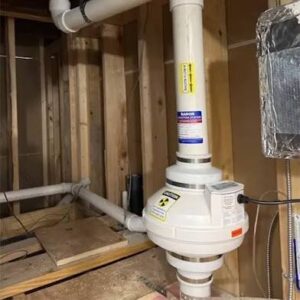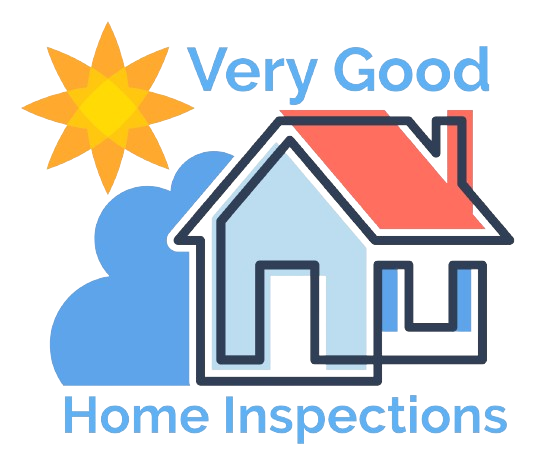
The Dangers of Radon: Why You Should Get Testing Done
- Radon is an invisible, odorless gas that can pose significant health risks, yet many homeowners are unaware of its presence in their homes. According to the U.S. Environmental Protection Agency (EPA), radon is the second leading cause of lung cancer in the United States, and it is responsible for approximately 21,000 lung cancer deaths each year. Despite these alarming statistics, most people don’t think about radon unless they are specifically informed about it. In this post, we’ll explore the dangers of radon, how it can enter your home, and why testing for this harmful gas is essential for your health and safety.
What Is Radon?
Radon is a naturally occurring radioactive gas that forms when uranium, thorium, or radium in soil, rock, and water breaks down. It moves through the ground and can seep into homes through cracks and gaps in foundations, walls, and floors. Because radon is colorless, odorless, and tasteless, there is no way to detect it without the proper testing equipment.
The Health Risks of Radon Exposure
While radon exposure may not lead to immediate symptoms, its long-term effects can be deadly. When radon gas is inhaled, radioactive particles can be trapped in the lungs, leading to cellular damage over time. This damage increases the risk of lung cancer, particularly among smokers or former smokers. In fact, smokers who are exposed to high levels of radon have a significantly higher risk of developing lung cancer than non-smokers.
The risk of radon-induced lung cancer also depends on the level of radon in your home and how long you’re exposed to it. The EPA recommends taking action if the radon level in your home exceeds 4 picocuries per liter (pCi/L), which is considered the safe threshold for exposure.
How Radon Enters Your Home
Radon can enter any home, regardless of its age, location, or the materials used in construction. It typically enters through the following:
-
Cracks and Gaps in the Foundation: Radon moves through the ground and can find its way into your home through cracks in the foundation or gaps around pipes, drains, and vents.
-
Basements and Crawlspaces: Since radon is heavier than air, it tends to accumulate in lower levels of homes, such as basements and crawlspaces. Homes with poor ventilation or unsealed entry points may have a higher concentration of radon.
-
Well Water: Radon can also be present in water, especially in well water. When water containing radon is used, the gas is released into the air, which can increase exposure levels.
-
Building Materials: Some building materials, particularly those containing uranium or radium, can contribute to radon levels in your home.
Why You Should Test for Radon
Testing for radon is the only way to know if your home is at risk, as you cannot detect it by sight, smell, or taste. Here’s why you should consider getting a radon test:
-
Health Protection: If radon levels in your home are high, the first step is to reduce them to a safer level. Testing gives you the knowledge you need to protect your family’s health and lower the risk of lung cancer.
-
It’s Easy and Affordable: Radon testing is simple and affordable. You can either purchase a radon test kit at a hardware store or hire a professional to conduct the test. The process generally involves placing a device in the lowest livable area of your home for a few days, after which it will provide a reading of the radon concentration.
-
Peace of Mind: If you test and find that your home’s radon levels are low, you’ll have peace of mind knowing that your family is safe. On the other hand, if levels are high, you can take corrective action, such as installing a radon mitigation system to reduce exposure.
-
Real Estate Transactions: If you’re buying or selling a home, a radon test is an important step in the process. Sellers should be proactive and test their home before listing it, while buyers may want to include a radon test as part of the inspection process. Many states and municipalities require radon testing as part of the home sale process.
How to Reduce Radon Levels in Your Home
If your radon test reveals elevated levels, the good news is that there are ways to reduce radon in your home. Common radon mitigation methods include:
-
Sub-slab Depressurization: This is the most effective method, which involves installing a vent pipe and fan system to draw radon gas from beneath the foundation and vent it outside.
-
Sealing Cracks and Gaps: Sealing cracks in the foundation, around windows, and other entry points can help reduce the amount of radon that enters your home.
-
Increasing Ventilation: Improved ventilation can help disperse radon gas more effectively. Installing fans or improving airflow in basements and crawlspaces can lower radon levels.
-
Radon-Resistant Construction: If you’re building a new home, consider using radon-resistant construction techniques to prevent radon from entering the structure.
Conclusion
Radon is a silent but dangerous threat that can lurk in your home without you even knowing it. The long-term health risks of radon exposure, particularly its link to lung cancer, make it crucial to test your home for radon. If you haven’t tested for radon yet, don’t wait – take the necessary steps to protect yourself and your loved ones today. Testing for radon is quick, easy, and affordable, and the benefits of knowing whether your home is at risk far outweigh the potential consequences of ignoring this dangerous gas.
Take action now, and breathe easier knowing that you’ve made the right choice for your health and safety.

